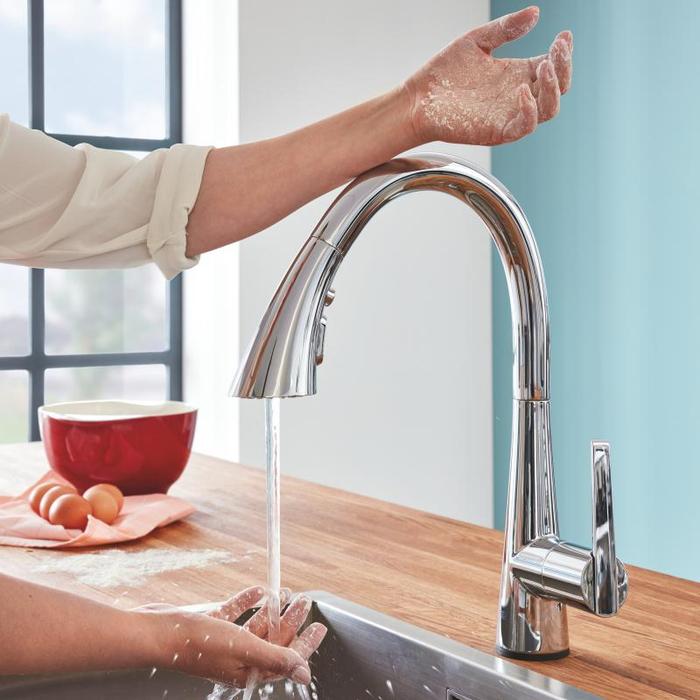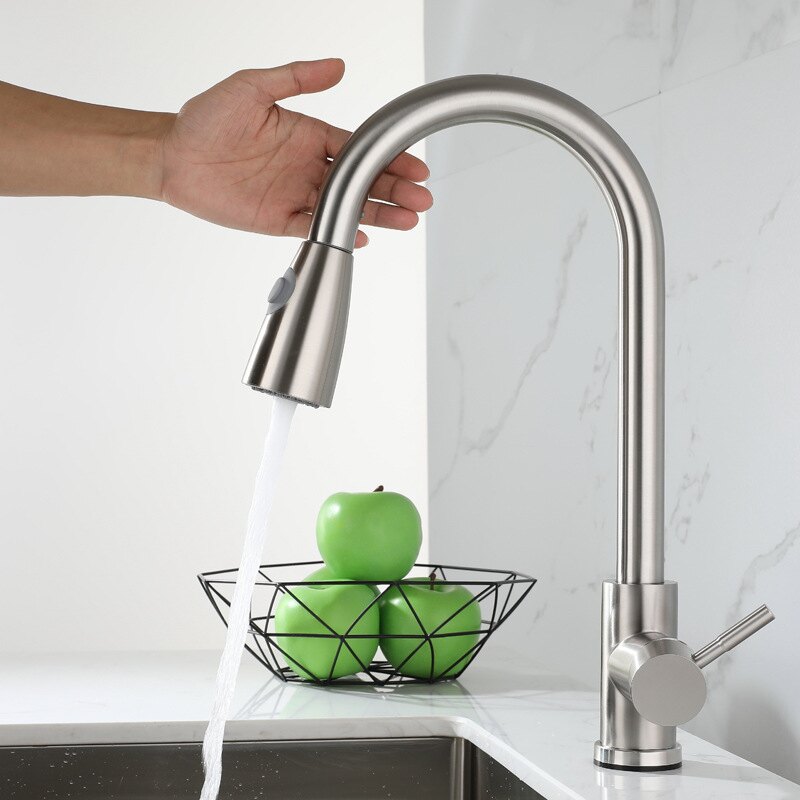After a hard day’s work, the idea of simply sliding your plate under the kitchen faucet or putting your hand under it to turn on the kitchen faucet brings pure joy. Fortunately, this is no longer part of the magical fantasy. The touchless kitchen mixer is now popular for its unparalleled ease of use, convenience and accuracy. More and more touchless kitchen mixers on the market are sold at competitive prices, but before you decide to buy, it is important to understand the science behind touchless kitchen mixers and how they differ from traditional similar products.
When you use the motion sensor of these faucets, just wave your hand in front of the sensor to turn on the kitchen faucet. When buying non-contact faucets, please consider the number and location of motion sensors. These sensors are usually placed at the bottom, near the handle of the faucet or the top of the faucet. The wave sensor is usually placed on the top of the faucet to detect hand waves, while the ready sensor is usually placed near the bottom of the faucet to detect objects placed in the sink. On the other hand, automatic faucets use presence sensors instead of motion sensors. They detected whether someone under the faucet opened it by hand. Once you remove your hand from the faucet, it will turn off the faucet. Most of these faucets use infrared light to detect the presence. When you put your hand under the faucet, this infrared light reflects off your skin and sends a signal to the kitchen faucet to turn on the faucet. Some also use ultrasonic field sensors to detect your hand when the field is damaged. Once the sensor detects the signal, the water flow will open and close with the help of solenoid diaphragm valve or gear motor to open and close the valve. Diaphragm valves use rubber discs to control water flow. The valve is usually closed, but once a signal is sent, the solenoid valve opens it so that water can flow out of the water outlet. Non-contact faucets also provide you with manual operation options, and you can use them like traditional faucets. The water temperature is adjusted by an independent control unit in the non-contact faucet. You need to adjust the temperature setting to the optimum temperature, and it will remain in this state until you change it. Use the faucet handle to adjust the water flow in the faucet. Non-contact faucets are either battery-powered or AC power via an adapter, while other faucets give you the opportunity to operate in any way you want. If your faucet requires an AC adapter to power the motion sensor, then you need to have a power outlet near the sink.
When your hands are dirty or busy with things-non-contact faucets are very useful because they will automatically open by sensing your movements. In addition, they can prevent pollution caused by simultaneous contact with different things. However, touch faucets are more popular than non-contact faucets because the hands-free sensor may be falsely activated due to a large amount of activity in the kitchen.
 VIGA Faucet Manufacturer
VIGA Faucet Manufacturer 

